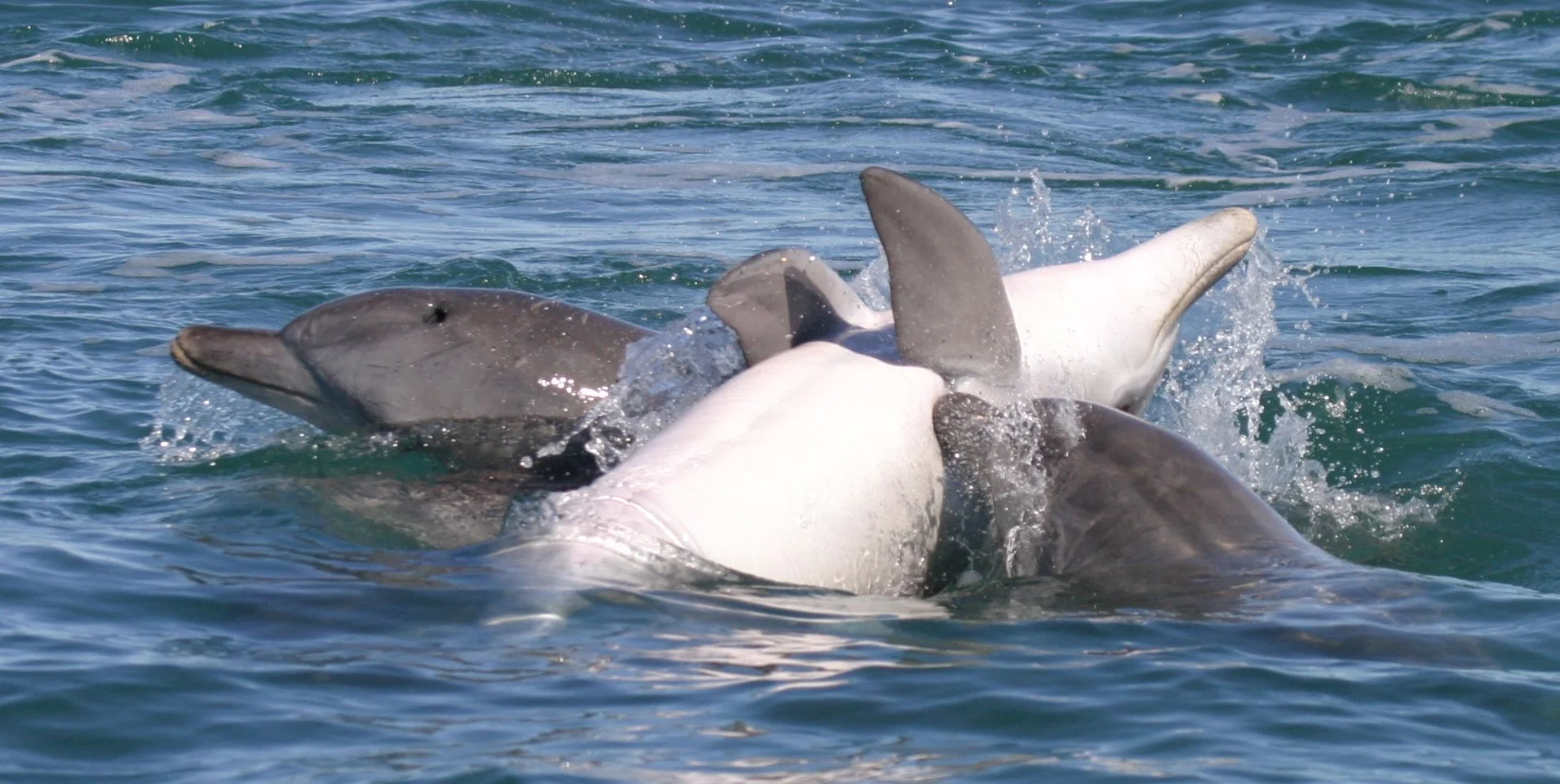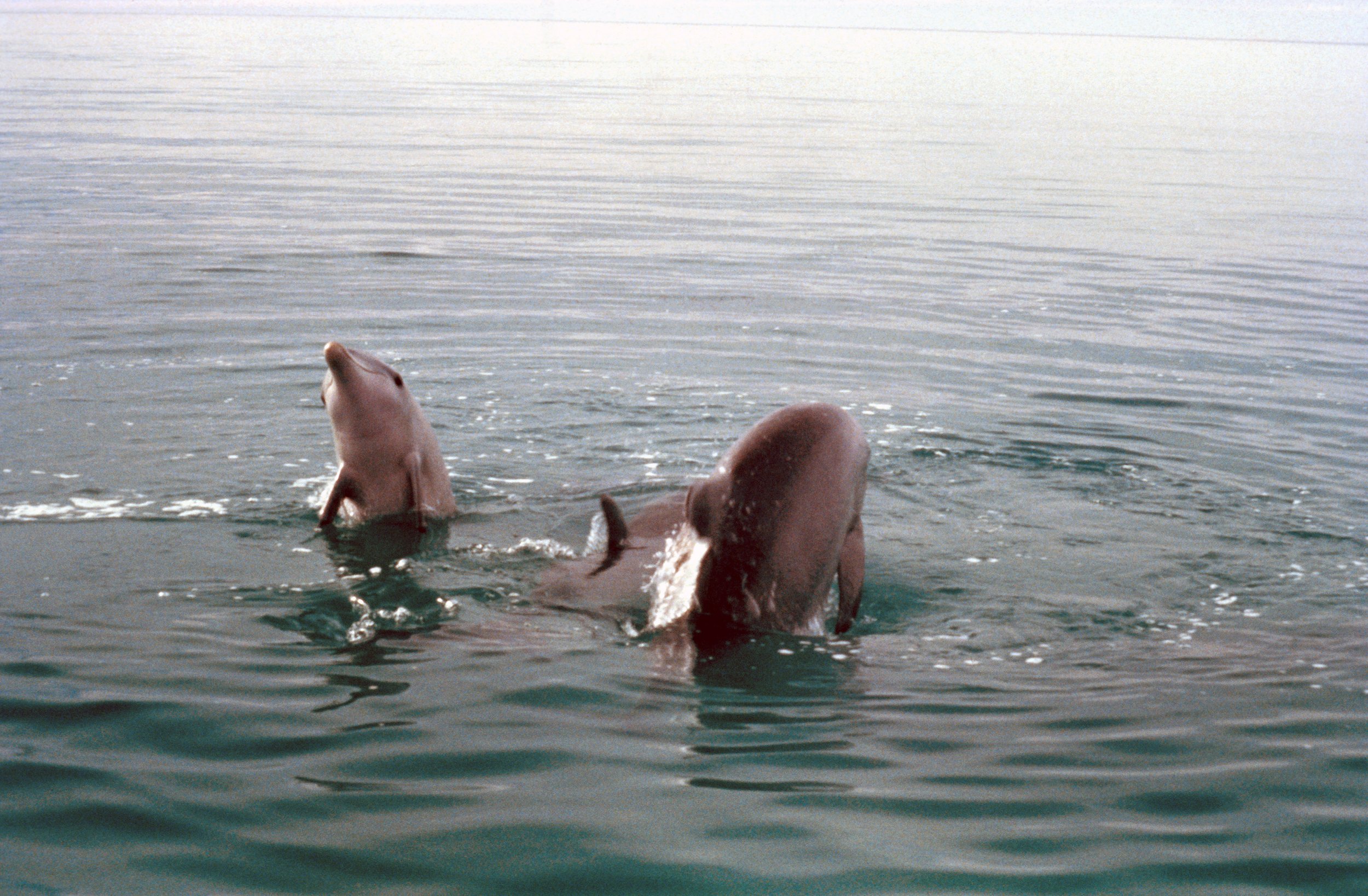Dolphin Intelligence in the Wild: Culture
Research on dolphin culture in Shark Bay has focused on different foraging tactics among individuals that live in the same area, mostly female spongers. Two recent scientific discoveries by our group have changed that picture and will now allow us to examine cultural variation among the most complex cooperative social groups known outside of humans; the multilevel male alliances in Shark Bay.
Foraging Culture
Some alliances prefer to hunt over shallow seagrass beds. This dolphin is throwing a fish it caught, along with the mouthful of seagrass it grabbed in the process!
We found that alliances with broadly overlapping ranges nonetheless hunt for prey in very different habitats. For example, the Exfins live in the same area as Hook’s Crew but the Exfins hunt in the deeper channels while the Hook’s forage on shallow seagrass flats, and several were Kerpunkers! In another study we report our discovery of a male sponging alliance!
The notorious Real Notch was a master dolphin politician and perhaps the key figure in Richard Connor’s 2018 book, Dolphin Politics in Shark Bay. Real Notch and his buddy of 20 years, Hi, were extreme shallow water foragers. Here Hi pursues and catches a fish in the shallows.
We suspect that males prefer alliance partners with whom they find greater camaraderie, which may include peers who prefer to hunt the same way in the same area, using behaviors they learned from their mothers. It is also possible that some males conform to the behavior of others, i.e. they adopt the hunting behaviors of an alliance they wish to join.
In addition to feeding behaviors, The Dolphin Intelligence in the Wild Project will investigate alliance cultures in social behavior and communication!
Vocal Culture
The Shark Bay dolphins communicate using a huge repertoire of sounds that we are only beginning to decipher. We know that there are vocal cultures, ‘dialects’, that distinguish populations and groups of other odontocetes, such as Killer and Sperm whales that live in stable mother-centered societies. The Shark Bay dolphins don’t live in a mother-centered society, but the stable second-order male alliances may well have vocal cultures!
A male ‘popping’ at a female he is herding. Pops are used by males in this context to keep the female close. Incredibly males working together to herd a female often coordinate pops. Do alliances vary in the degree to which they coordinate vocalizations or in the kinds of vocalizations they use? We will find out!
Social Behavior Culture
The dolphins also have a large repertoire of social behaviors, including ways they touch and rub against other. Just as primates groom each other with their hands, dolphins use their flipper and other parts of their body to engage in friendly contact. Such social behavior may vary among primate groups of the same species; we will find out if alliances differ in the types and frequencies of particular social behaviors.
Dolphins often pet and stroke each other with their flippers
Allied male dolphins surfacing and diving synchronously is an impressive display of unity!
Humans and dolphins have also converged in the used of synchrony among allies, likely to communicate their unity to others and impress females. Synchrony is a striking and common feature of male behavior in Shark Bay, and we will discover if there are alliances differ in the kinds of synchronous displays
Creative synchrony among allies males. Allies males perform an incredible variety of synchronous displays around consorted females which the males are likely ‘making up’ as they go. Here two males perform synchronous belly slaps while moving in opposite direction on either side of the female. Do such displays show cultural variation among alliances? We will find out!
Wave and Shave perform synchronous ‘rooster struts’. As synchronous displays go, this one is fairly common. Do alliances differ in how often they perform synchronous rooster struts?





